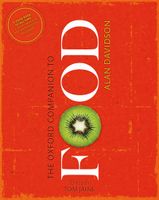Advertisement
Sausages of Italy
Published 2014
These include one outstandingly large and important family, the salami. This name (the plural of the Italian word salame) applies to matured raw meat slicing sausages made to recipes of Italian origin, either in that country or elsewhere. Within Italy there are scores of types.
Salami are mostly medium to large in size, and those made in Italy are usually dried without smoking. Characteristically, when cut across, they display a section which is pink or red with many small to medium-sized flecks of white fat. Pork, or mixtures of pork and beef or pork and vitellone (young beef), form the basis; seasonings and fineness or coarseness of cut vary to regional taste. Names denote style, a principal ingredient, or place of origin. These include:
casalinga (domestic, home made), of coarse-cut pork with plenty of black pepper, and not very large;
nostrano (our own), usually quite coarse;
Genovese (from Genoa), of pork and vitellone, strongly flavoured;
Milanese (also known as crespone and bindone), mild types, mostly pork with beef or vitellone, with garlic—now mass produced, and probably the best-known type outside Italy;
Felino, from the town of that name near Parma, an especially fine and highly regarded type containing wine and whole peppercorns;
Fiorentina (Florentine), of various kinds, one variation being fiocchiona, a large, coarse-cut pork salame flavoured with fennel seeds;
cacciatorino (from cacciatore, hunter), a small type from the region around Lake Como.


